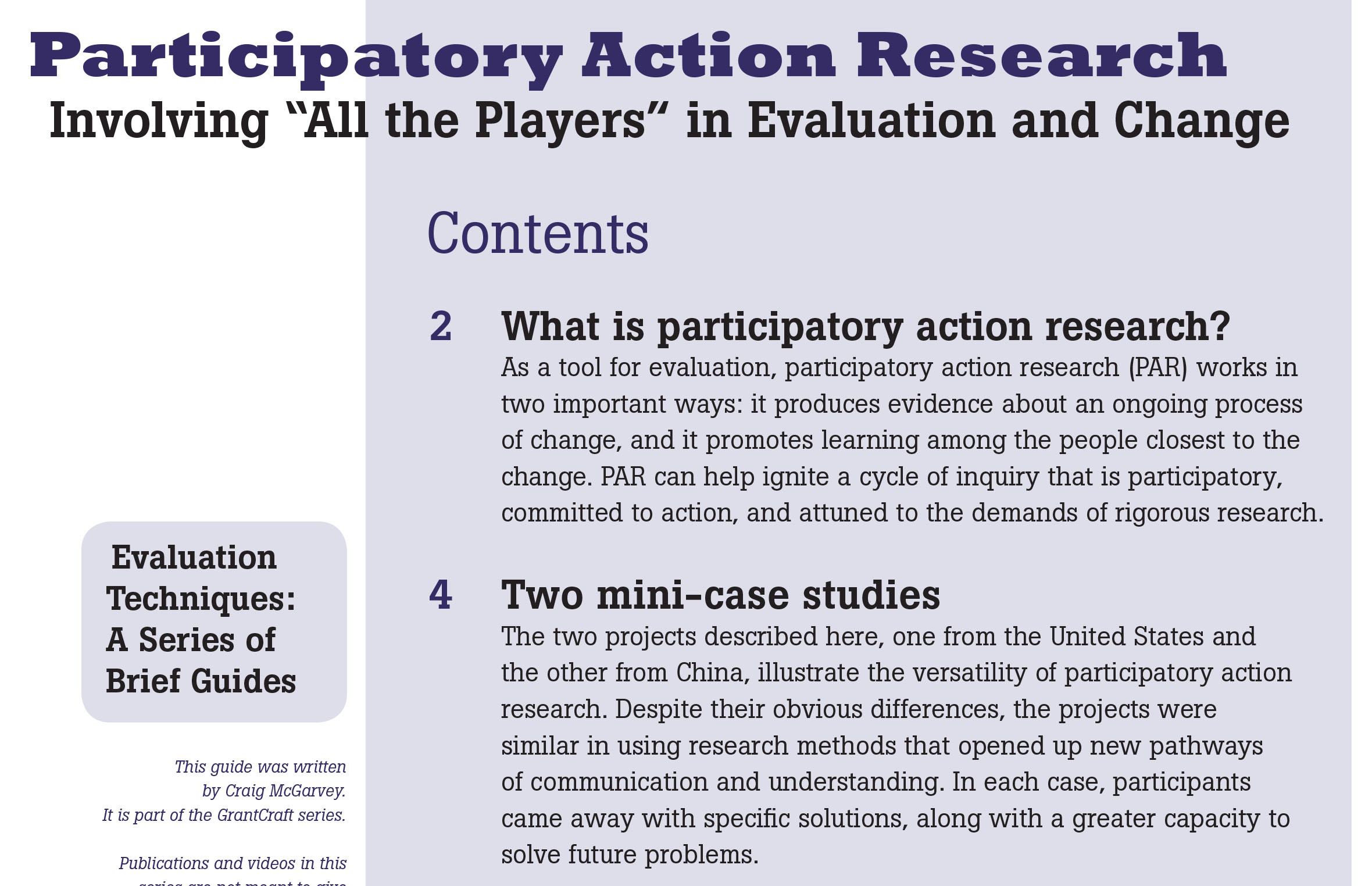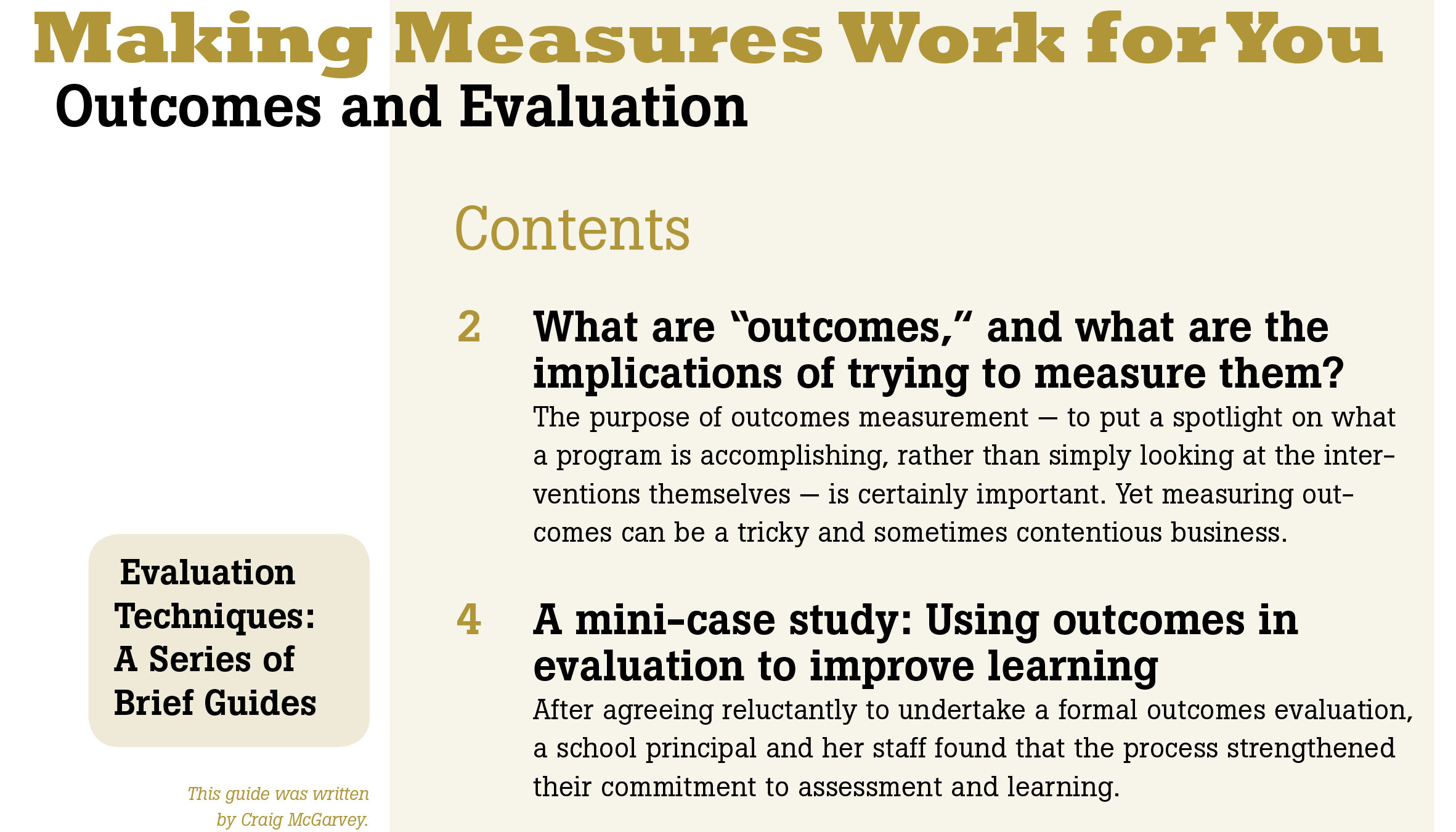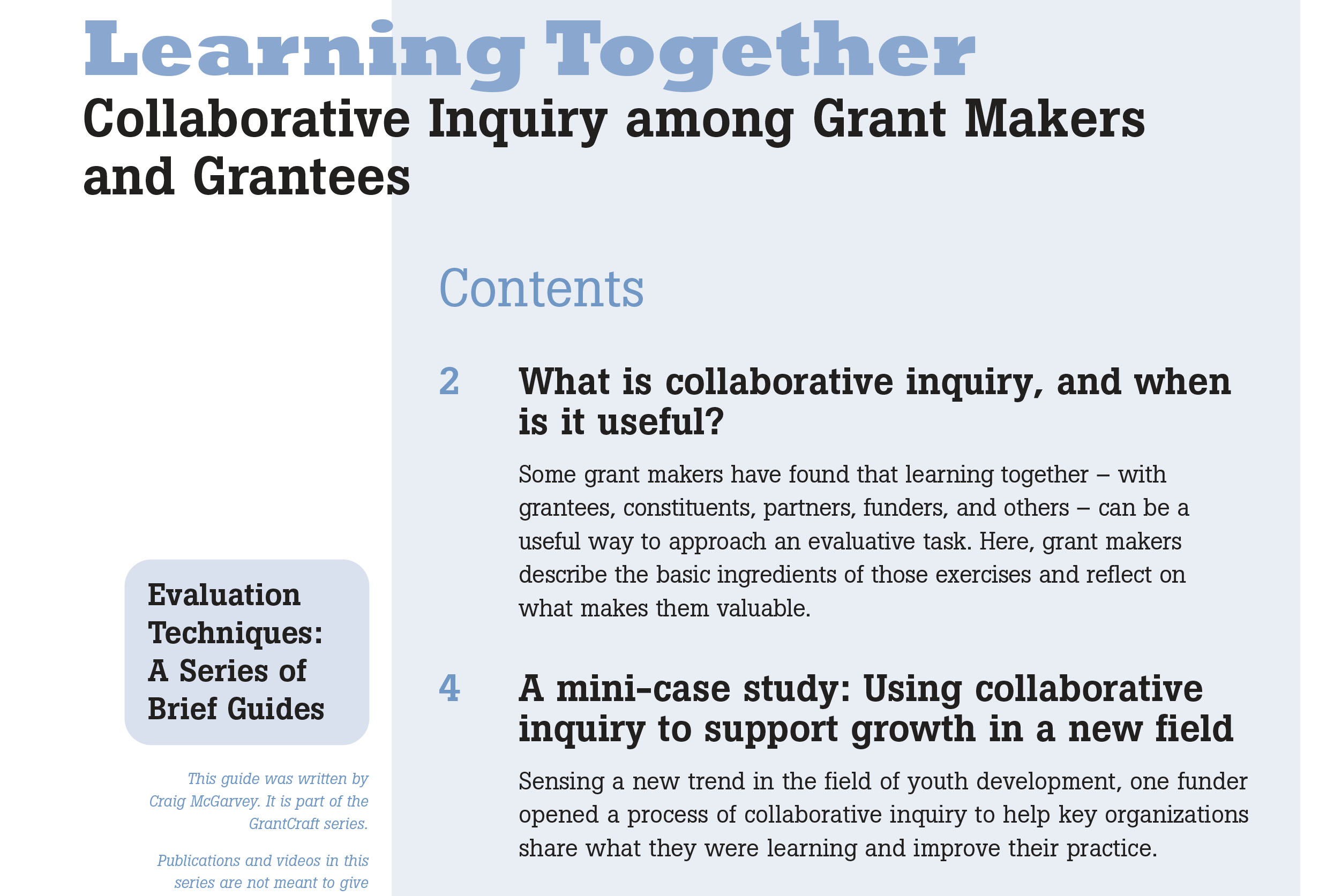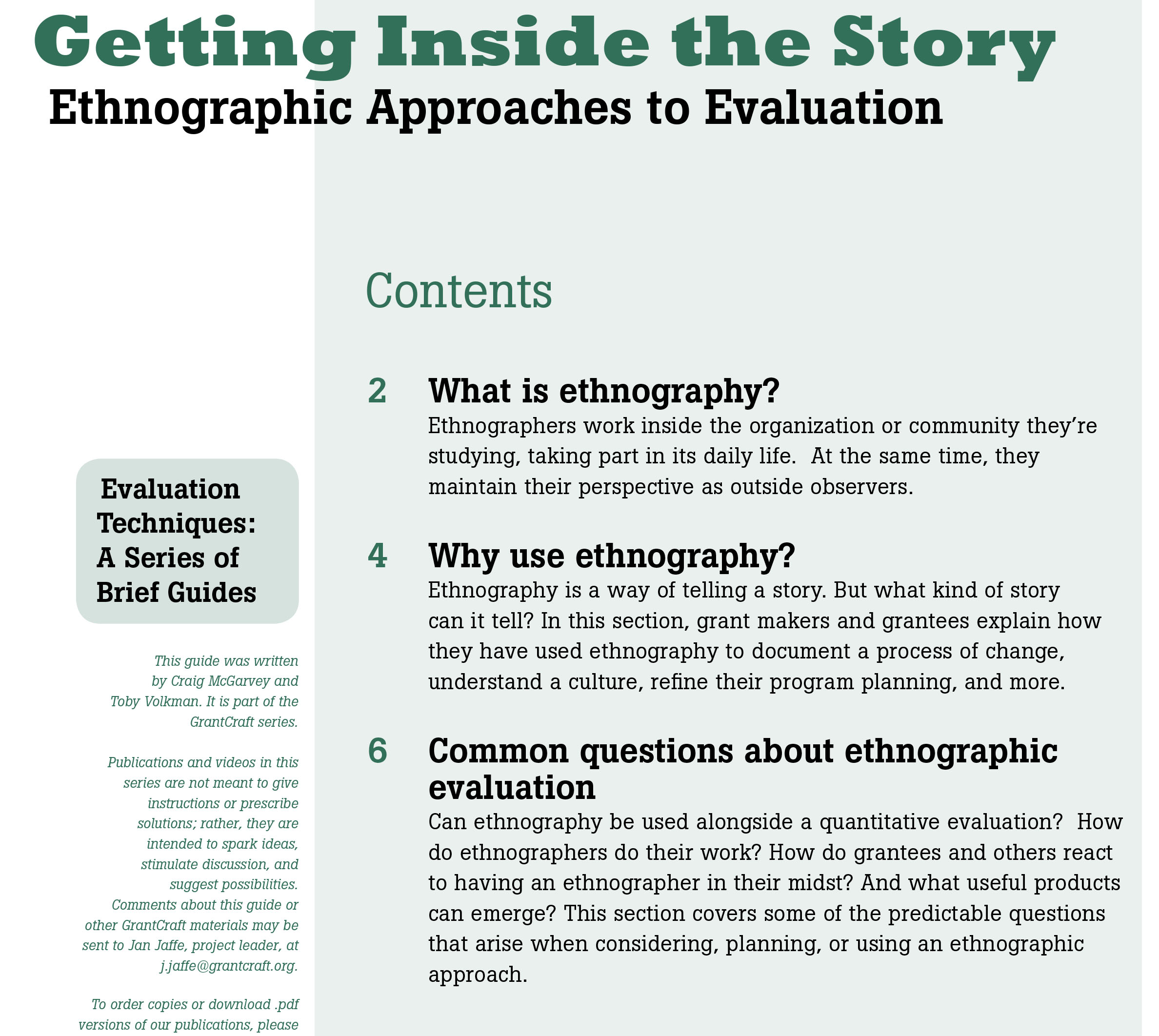Mapping Change Using a Theory of Change to Guide Planning and Evaluation
"What are we doing, and why do we think it's going to make a difference? Are we being effective?" Grantmakers ask evaluation questions like these of their grantees and themselves. This brief guide explains why grantmakers use theories of change to guide their questioning, unearth assumptions that underlie their work, establish common language, and develop strong action plans. Contributors to the guide also describe how a theory of change sets the stage for evaluation by clarifying goals, strategies, and milestones.
Highlights
- What a theory of change looks like
- Theory of change vs. logic model
- Mini-case study: theory of change and strategic planning
This guide is part of a series on evaluation techniques, check out related content below for additional resources in this series.
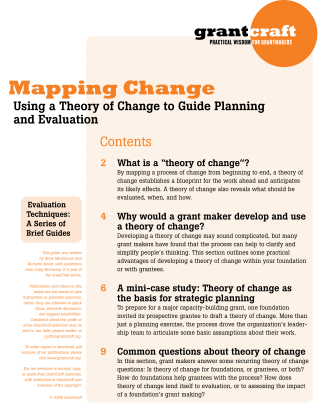
Categories
Content type
-
Link to Getting Inside the Story
Frequently Asked Questions: Theory of Change and Evaluation
How can a theory of change help with evaluation?
Read more
A good theory of change can clarify what should be measured, when, how, and by whom. One grantmaker explained that constructing a theory of change poses four crucial questions that can lead to an effective evaluation: “Is the intervention meaningful? Is it plausible? Is it doable by this particular organization? And is it measurable?” -
Link to Getting Inside the Story
External Resources: Theory of Change
Theory of Change. a collaborative project of ActKnowledge and the Aspen Institute Roundtable on Community Change. This comprehensive website offers a wide array of background information, tools, and sample documents that can help grantmakers and grantees get started with theory of change.
Read more -
Link to Getting Inside the Story
Theory of Change: Framing Evaluation Questions
By making explicit the interrelated strands a complex initiative, a theory of change can draw out the questions a grantmaker will want to be asking over time, either through formal evaluations or more informal monitoring. For example, an actual theory of change for a national field-building initiative posits that long-term success will depend on expanding knowledge in a relatively new area of practice. Strategically, therefore, the grantmaker expects to commission a range of scholarly and applied research, then support activities to help people in the field absorb and aggregate what is learned
Read more -
Link to Getting Inside the Story
Why Develop and Use a Theory of Change?
Establish common principles and vocabulary. Reflecting on work she did to help grantees develop a theory of change, one grantmaker said, “It provides a common language to talk together among yourselves and to people out in the public about what you’re doing and how you’re doing it.” A consultant who helped plan a new international fund for social justice made a related point: “Without a clearly articulated theory of change,” he explained, “planning is almost inevitably ad hoc, prone to undue influence by key individuals and in danger of leading an organization in directions not necessarily focused on the mission.”
Read more -
Link to Getting Inside the Story
Theory of Change or Logic Model
Some people use the terms “theory of change” and “logic model” interchangeably. Others say that it is important to maintain a distinction between the two. What do the two terms mean? And what’s the difference between them?
Read more -
Link to Getting Inside the Story
What is a “Theory of Change”?
A theory of change describes a process of planned social change, from the assumptions that guide its design to the long-term goals it seeks to achieve. Grantmakers who have created theories of change explain that having a theory helps them and their grantees draw logical connections between activities and outcomes.
Read more -
Link to Getting Inside the Story
Frequently Asked Questions Theory of Change and Evaluation
How can a theory of change help with evaluation?
Read more
"What are we doing, and why do we think it's going to make a difference? Are we being effective?" Grantmakers ask evaluation questions like these of their grantees and themselves. This brief guide explains why grantmakers use theories of change to guide their questioning, unearth assumptions that underlie their work, establish common language, and develop strong action plans. Contributors to the guide also describe how a theory of change sets the stage for evaluation by clarifying goals, strategies, and milestones.
Highlights
- What a theory of change looks like
- Theory of change vs. logic model
- Mini-case study: theory of change and strategic planning
This guide is part of a series on evaluation techniques, check out related content below for additional resources in this series.


